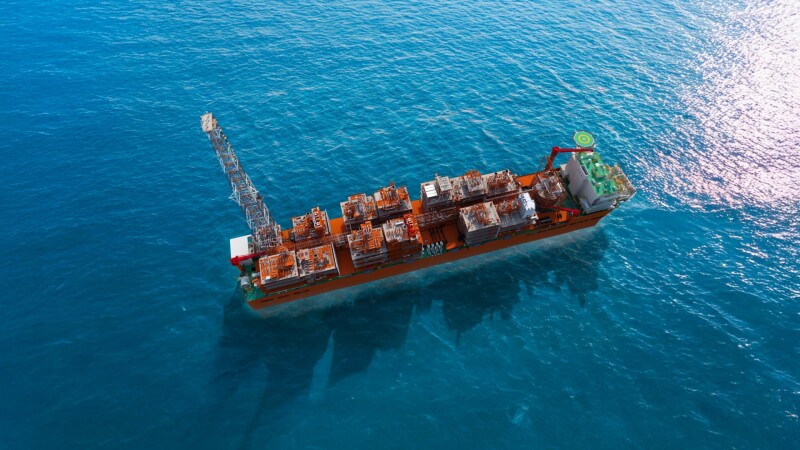Eni and its partners in the Area 4 project offshore Mozambique have taken a final investment decision (FID) to build a second floating liquefied natural gas unit (FLNG) to double LNG production from the deepwater Coral gas field in East Africa’s Rovuma Basin to over 7 mtpa.
With the first LNG scheduled to drop in the second quarter of 2028, the 3.55-mpta capacity Coral Norte FLNG will be an identical twin to the Coral Sul unit, which has been producing from six subsea wells tied back to the FLNG unit at the southern end of the Coral gas field since the fourth quarter of 2022.
At a ceremony on 2 October in Maputo to greenlight the FID, Eni CEO Claudio Descalzi noted that Coral North “is projected to generate $23 billion in tax revenues” and will “assign $3 billion in contracts to local companies.”
Lining Up EPC for an Encore
While the full $2.5-billion engineering, procurement, and construction (EPC) contract for the Coral North project has yet to be formalized, the TJS consortium—led by Technip Energies with Japan’s JGC Corporation and Samsung—is expected to secure most of the work, as it did with Coral Sul.
Technip Energies and JGC are expected to focus on EPC of the FLNG topside, while Samsung Heavy Industries manages EPC for the FLNG hull and topside fabrication under a $637-million preliminary agreement signed in July 2025.
Preliminary agreements for EPC followed the Mozambique government’s approval in June 2025 of the $7.2-billion development plan for the Coral Norte gas field offshore Cabo Delgado.
Eni holds a 50% operator interest in the field development project with partners China National Petroleum Company (20%), Korea Gas Corporation (10%), Mozambican state-owned national oil company ENH (10%), and ADNOC's XRG subsidiary (10%).
Onshore LNG Facilities Still Viable
Eni’s adoption of FLNG technology has enabled Mozambique to commercialize its offshore gas reserves as construction of onshore LNG facilities—ExxonMobil’s Rovuma LNG for Area 4 reserves and TotalEnergies’ Mozambique LNG for Area 1 gas production—have been stalled by militant activity on the Afungi peninsula.
ExxonMobil launched front-end engineering and design in October 2024 to support a possible FID declaration in 2026, as the company reported in its 2025 10-K investment filing.
Although Coral Norte’s reserves are not disclosed separately, they are drawn from the same reservoir as Coral Sul, which Eni estimates holds between 450 and 500 Bcm of natural gas. Eni pegs reserves in the Rovuma Basin—in the Coral, Mamba Complex, and Agulha reservoirs combined—at around 2,400 Bcm of gas in place, according to the company’s most recent news release.
Throughout 2025, TotalEnergies CEO Patrick Pouyanné has repeatedly referred to a mid-year lifting of his company’s 2021 force majeure declaration that halted construction of the $20-billion, 13.1-mtpa onshore liquefaction plant to develop Mozambique’s offshore Golfinho and Atum fields in Area 1 of the Rovuma Basin.
While TotalEnergies’ CEO promised as late as the end of September 2025 that force majeure would end this year, first LNG production is not expected until 2029. That, together with Area 4’s two FLNG units, would propel Mozambique into third place among Africa’s LNG exporters.


